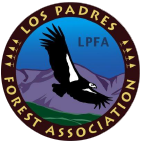California Back Oak (Quercus kelloggii)

|
California black oak |
|
Quercus kelloggii Newberry |
|
Plant Symbol = QUKE |
Contributed by: USDA NRCS National Plant Data Center & UC Davis Arboretum
Uses
Ethnobotanic: California black oak provided a fountain of resources to Native Americans of California and Oregon including food, medicine, dyes, utensils, games, toys, and construction materials. Large quantities of young, supple sprouts were utilized for myriad items. An abundance of acorns were gathered and formed a staple food throughout much of California--eaten in the form of a soup, mush, bread, or patties. Today, acorns are still gathered by people of many different tribes in California and southern Oregon and relished as food. The tree and its uses are important touchstones for maintaining tribal ethnicity.
Wildlife: It is well known that bears (Ursus americanus), ground squirrels (Spermophilus scrofa), jays (Cyanocitta stelleri), band-tailed pigeons (Columba fasciata), acorn woodpeckers (Melanerpes formicivorus), pocket gophers (Thomomys bottae), deer mice (Peromyscus spp.) and black-tailed deer (Odocileus hemionus), among many other animals, find acorns a favorite food source. Studies have shown that birds can harvest significant amounts of acorn from tree canopies within a short duration and bears will also sometimes harvest acorns before the crop has dropped.
Building Materials: California black oak is currently utilized for high-grade lumber and pallets, industrial timbers, sawdust for mulching, and fuel wood. Its hardness and finishing characteristics make it suitable for industrial flooring and its grain characteristics make it desirable for paneling and furniture.
Status
Please consult the PLANTS Web site and your State Department of Natural Resources for this plant’s current status, such as, state noxious status and wetland indicator values.
Description
General: Oak Family (Fagaceae). California black oak is a deciduous, hardwood tree with a broad rounded crown from 10-25 m. high. It is the largest mountain oak in the West and surpasses all other California oaks in volume, distribution, and altitudinal range. The trunk bark is dark and covered with small plates. The bright green leaves are distinctly six-lobed ending in one to four bristle-tipped teeth, and the leaves are 7 to 20 cm. long. The acorns are 2.5 to 3.5 cm. in length and mature in the second year. The nut is deeply set in the cup and the cup is covered with thin, flat and imbricate scales.
Distribution
The tree ranges from Baja, California on the south up into southwestern Oregon. Mountain ranges where it is found include the San Bernardino, San Jacinto, Agua Tibia Mountains, and the Tehachapi Mountains in southern California, the Santa Cruz and Santa Lucia Mountains in central California, the Sierra Nevada, and the Klamath and Cascade Mountains of northern California and southern Oregon. It spans an elevation of 200 to 2400 m. and takes a shrubby form at higher elevations. It can be found in northern oak woodlands, mixed conifer forests and mixed evergreen forests.
Establishment
If possible, gather acorns from many different trees locally, to maintain genetic diversity of California black oak and to ensure that the plants are adapted to the site. The seeds of most oaks are short-lived and must be sown or refrigerated quickly, otherwise they lose their ability to germinate. They are best gathered directly from the tree or from the ground within a short time of their dropping, usually within several days. To test their ripeness--take an acorn that's still in its cap and twist it lightly. If it pops out of the cap, the acorn is ripe. Store the seeds without their caps in a grocery sack until ready to plant. The seeds can be sown in autumn outdoors, or if the seeds are started in pots in the greenhouse in the early spring, they should be stratified for two months between 33 and 40 degrees in a refrigerator.
Fill a gallon Ziploc™ bag about half full with acorns, and then add about a cup of dry perlite and a little bit of vermiculite (3:1 mixture). Shake the bag up to distribute the perlite around the acorns, label the bag, and place in the refrigerator. Check the bag weekly and discard moldy acorns. Any acorns that have germinated need to be taken out of the bag and sown. The acorns can be placed in the refrigerator in October or November and taken out two to five months later. Then plant the seeds on their side directly in long, deep pots (2 in. in diameter by 10 inches long) with potting soil and a slow release fertilizer. Water the tubes and place them in diffused light in the nursery or outside, making sure to keep each tube suspended off the ground or bench so the large air holes at the bottom of the tube are exposed. When the tree roots hit the air, they'll stop growing. Water when the surface of the soil is dry to the touch, but don't over-water.
Out-plant the seedlings the following winter in a sunny location, and water the transplants to ensure sufficient moisture and eliminate air pockets. Be careful to keep the soil from falling off the roots. Place the seedlings in the ground such that the top of the soil from the container is even with the ground line. Studies have shown that California black oak seedlings planted in the fall or winter grow and survive better than seedlings planted in the spring. Use a pick mattock for planting, which has a pick on one surface and a triangular wedge on the other surface. Protect the seedlings from weeds, drying winds, grasshoppers, and mammals that might feed on the roots, leaves, or trunks. Also water (deeply) the seedlings the first summer. A good seedling protector is essential and can be a simple wire window screen mesh and wooden stake. Bend the mesh into a cylinder that is about 6-8 inches in diameter and 3 feet tall. Attach the mesh cylinder onto the wooden stake with staples or carpet tacks. Place the tube over the seedling and pound the stake into the ground. Seedlings should be kept free of vegetation for 2 to 3 feet surrounding the seedling.
Direct seeding: Pick acorns without insect exit holes or diseases. Store acorns for one month in a sealed plastic bag in the refrigerator. Dig a hole with the trowel, shovel, or hoe and be sure to break up the soil much deeper (one to two feet). Plant the acorns on their sides, one to two inches deep in the fall of the year and backfill with loosened soil to accommodate the growing of roots. Plant several acorns in each hole and thin multiple seedlings down to a single most vigorous plant. Water (deeply) the acorns the first summer. Weed several feet around each seedling for several years. Protect the seedlings from animals until well established.
Management
Keep grasses and other plants that require a lot of moisture away from the oaks. California black oak should not be irrigated except in years of unusually low rainfall. If a drought year, supplemental watering can take place in the spring to complement natural rainfall. Water the soil from halfway between the trunk and the drip line to 10-15 feet beyond, allowing water to penetrate the soil to a depth of 18 to 24 inches. It may be necessary to water for 4 to 6 hours to get water to this depth. Native plants that are drought tolerant and shade tolerant and require no summer water can be planted under the oaks, such as California brome (Bromus carinatus), deergrass (Muhlenbergia rigens), Calochortus spp., and Dichelostemma spp. among others. Light pruning can be done in the winter on mature oaks to remove weak, diseased, and dead branches but never top oaks.
Once established, California black oak is quite fire-tolerant. Many tribes in California set frequent light-surface fires in areas of California black oak to ensure continual yields of high quality acorn. Major reasons for burning included: 1) facilitate acorn collection; 2) increase the quality and quantity of acorn production through decreasing diseases and decreasing acorn pests; 3) stimulate the production of straight shoots (epicormic) for the making of cultural items; 4) decrease the likelihood of major conflagrations that would destroy the oaks; 5) burning for mushrooms in the oak/ponderosa pine forests; and 6) increase edible grasses and other seed bearing herbaceous plants. Fires were typically set in the fall or early winter of the year, as families were leaving the higher elevations to over-winter below the snow line.
Cultivars, Improved and Selected Materials (and area of origin)
Available from most native plant nurseries within its range. Contact your local Natural Resources Conservation Service (formerly Soil Conservation Service) office for more information. Look in the phone book under ”United States Government.” The Natural Resources Conservation Service will be listed under the subheading “Department of Agriculture.”
References
- Anderson, M.K. 1993. The mountains smell like fire. Fremontia. Journal of the California Native Plant Society. Vol. 21:4(15-20).
- Dagit, R. 1998. Transplanting oak trees. Growing Native 9(6):1-24. Editor, L. Lacy. The Newsletter of the Growing Native Research Institute.
- Hagen, B.W. 1990. Keeping native California oaks healthy. Tree Notes #7. California Department of Forestry and Fire Protection.
- Hagen, B.W., B.D. Coate, & K. Oldham 1991. Compatible plants under and around oaks.
- Keator, G. 1998. The life of an oak: an intimate portrait. Heyday Books and California Oak Foundation, Berkeley, California.
- McDonald, P.M. 1990. Silvics of North America. Volume 2, Hardwoods. Burns, R.M. and B.H. Honkala (tech. coords.) Agriculture Handbook 654. USDA, Washington, D.C.
- McDonald, P.M. & W.E. Sundahl 1967. California black oak: a general bibliography on an increasingly valuable species. USDA, Forest Service Research Note 134. Pacific Southwest Forest and Range Experiment Station, Berkeley, California.
- Pavlik, B., P.C. Muick, S. G. Johnson & M. Popper 1991. Oaks of California. Cachuma Press, Los Olivos, California.
- Roberts, T.A. & C.H. Smith 1982. Growth and survival of black oak seedlings under different germination, watering, and planting regimes. Tree Planters' Notes pp. 10-12.
- Schettler, S, & M.N. Smith 1980. Nursery propagation of California oaks. IN: T.R. Plumb, ed. Proceedings of the symposium on the ecology, management, and utilization of California oaks. Gen. Tech. Rep. PSW-44. Berkeley, CA. U.S. Department of Agriculture, Forest Service, Pacific Southwest Forest and Range Experiment Station; 368 p.
- USDA, Forest Service 1974. Seeds of woody plants in the United States. USDA Agricultural Handbook No. 450. U.S. Government Printing Office, Washington, D.C. 416 pp.
- Young, B. 1998. How to propagate an oak from an acorn. Growing Native 9(6):1-24. Editor, L. Lacy. The Newsletter of the Growing Native Research Institute.
Prepared By & Species Coordinators
M. Kat Anderson
USDA, NRCS, National Plant Data Center
c/o Plant Sciences Department, University of California, Davis, California
Warren Roberts
UC Davis Arboretum, University of California, Davis, California
Edited: 05dec00 jsp; 29may03 ahv; 060809 jsp
For more information about this and other plants, please contact your local NRCS field office or Conservation District, and visit the PLANTS Web site<http://plants.usda.gov> or the Plant Materials Program Web site <http://Plant-Materials.nrcs.usda.gov>
The U.S. Department of Agriculture (USDA) prohibits discrimination in all its programs and activities on the basis of race, color, national origin, sex, religion, age, disability, political beliefs, sexual orientation, and marital or family status. (Not all prohibited bases apply to all programs.) Persons with disabilities who require alternative means for communication of program information (Braille, large print, audiotape, etc.) should contact USDA's TARGET Center at 202-720-2600 (voice and TDD).
To file a complaint of discrimination write USDA, Director, Office of Civil Rights, Room 326-W, Whitten Building, 14th and Independence Avenue, SW, Washington, DC 20250-9410 or call 202-720-5964 (voice or TDD). USDA is an equal opportunity provider and employer.
Read about Civil Rights at the Natural Resources Convervation Service.



